Your cart is currently empty!
Search results for: “66”
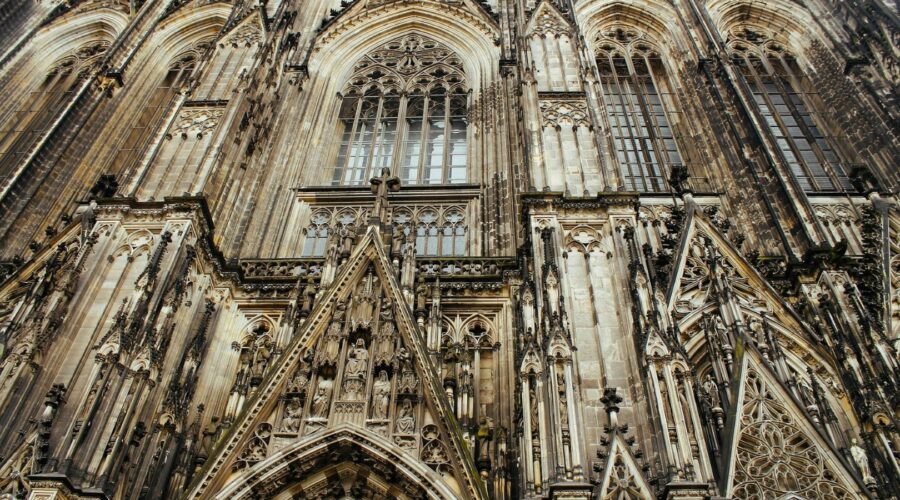
Discover the Enchanting History and Architectural Splendor of St. Michael’s Church
St. Michael’s Church, with its captivating history and breathtaking architecture, stands as a testament to the enduring legacy of faith and artistic ingenuity. This magnificent edifice is not just a place of worship but a timeless treasure that invites exploration and admiration.
A Journey Through Time: The History of St. Michael’s Church
St. Michael’s Church has witnessed centuries of transformative events, shaping its identity and significance:
- Early Beginnings:
Founded in the 11th century, St. Michael’s Church was initially a modest wooden structure. As the congregation grew, the church underwent several expansions and renovations.
- Norman Conquest:
After the Norman Conquest in 1066, the church underwent significant alterations. The addition of a stone chancel and north aisle transformed its appearance.
- Medieval Masterpiece:
In the 13th century, the church reached its architectural zenith. The construction of the magnificent tower and spire added an iconic silhouette to the skyline.
- Victorian Restoration:
The 19th century brought about a restoration project that aimed to preserve the church’s medieval integrity while incorporating Victorian design elements.
Architectural Marvel: Exploring St. Michael’s Church
St. Michael’s Church is a masterpiece of architectural craftsmanship, blending various styles and boasting intricate details:
- Norman Origins:
The church’s sturdy Norman foundations are evident in the thick walls, round-arched windows, and imposing tower.
- Gothic Grace:
The pointed arches, ribbed vaults, and elegant tracery of the chancel and north aisle reflect the influence of Gothic architecture.
- Victorian Refinements:
The Victorian restoration brought about elaborate stained-glass windows, intricate carvings, and a beautifully crafted reredos that adorn the interior.
- Iconic Tower and Spire:
The church’s most striking feature is its magnificent tower and spire. Soaring to a height of 150 feet, it dominates the surrounding landscape and serves as a beacon of faith.
Significance and Legacy
St. Michael’s Church has played a pivotal role in the community and holds immense religious, cultural, and historical significance:
- Spiritual Sanctuary:
For centuries, St. Michael’s Church has been a sanctuary for worshippers, providing a sacred space for prayer, sacraments, and spiritual growth.
- Community Hub:
The church has always been an integral part of the community, hosting events, providing support, and fostering a sense of belonging.
- Architectural Heritage:
St. Michael’s Church is a protected architectural heritage site, recognized for its exceptional historical and aesthetic value.
- Tourist Destination:
The church attracts visitors from near and far, eager to witness its architectural grandeur and rich history.
Visiting St. Michael’s Church
If you’re planning a visit to St. Michael’s Church, here’s some essential information to guide you:
- Location:
St. Michael’s Church is conveniently located in the heart of the town, easily accessible by public transportation or car.
- Opening Hours:
The church is generally open to visitors during daylight hours, but it’s advisable to check the church’s website or noticeboard for any special events or service times.
- Admission:
Admission to the church is free, making it an accessible attraction for all.
- Guided Tours:
Guided tours are available upon request, offering an in-depth exploration of the church’s history, architecture, and significance.
- Respectful Conduct:
Remember that St. Michael’s Church is an active place of worship. Please be respectful of the ongoing services and maintain a quiet and appropriate demeanor during your visit.
Preserving a Timeless Legacy
St. Michael’s Church requires ongoing maintenance and restoration efforts to ensure its preservation for future generations:
- Regular Maintenance:
The church undergoes regular maintenance to preserve its structural integrity and ensure a welcoming environment for worshippers and visitors.
- Conservation Projects:
Periodic conservation projects are undertaken to address any repairs or restoration needs, ensuring the church’s longevity and architectural integrity.
- Community Support:
The church relies on community support through donations, fundraising events, and volunteering to sustain its preservation efforts.
Conclusion
St. Michael’s Church is a captivating tapestry of history, architecture, and spiritual significance. Its enduring presence has shaped the community, inspired countless hearts, and continues to awe visitors. Whether you seek solace, admire architectural wonders, or delve into the past, this timeless edifice has much to offer. Embark on a journey to St. Michael’s Church and discover the enduring legacy of faith and artistic triumph.
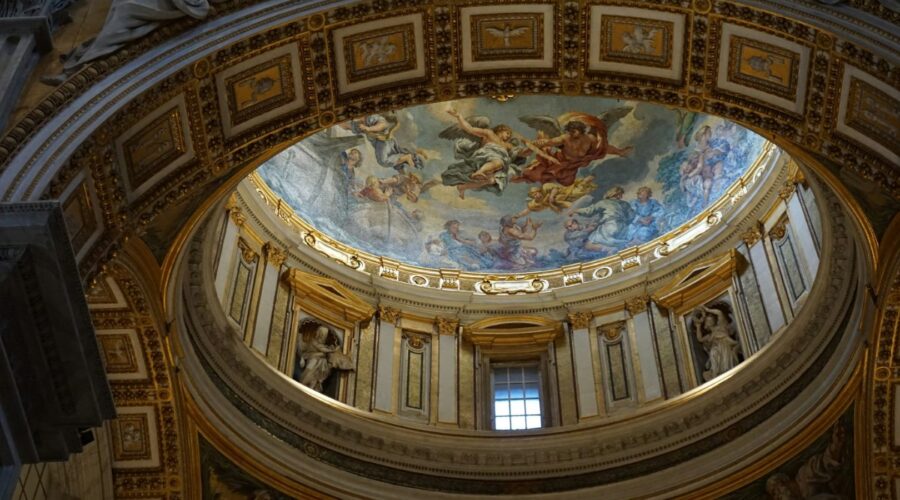
Charles Church: A Comprehensive Guide to the Prestigious London Neighborhood
Introduction
Charles Church is an exclusive neighborhood in Westminster, Central London. Known for its opulent terraced houses, leafy streets, and proximity to St James’s Park, it is a highly desirable area for discerning buyers. This guide provides an in-depth exploration of Charles Church, covering its history, architecture, amenities, and lifestyle, to help you make an informed decision about potential real estate investments.
History
Origins
The origins of Charles Church can be traced back to the 17th century, when the area was part of St Martin-in-the-Fields parish. In the 18th century, Charles Spencer, 3rd Duke of Marlborough, acquired land in the area and developed it into a residential enclave. The neighborhood was named after its prominent landmark, the Church of St Charles the Martyr, which was built in 1669.
Architectural Heritage
Charles Church is characterized by its elegant and cohesive Georgian architecture. The terraced houses, many of which are Grade II listed, feature red brick facades, sash windows, and wrought-iron balconies. The neighborhood’s wide streets and ample green spaces create a harmonious and verdant environment.
Amenities
Parks and Recreation
Charles Church benefits from its close proximity to St James’s Park, one of London’s largest and most beautiful parks. The park offers a serene setting for walks, picnics, and outdoor activities. Other nearby green spaces include Green Park and Hyde Park.
Shopping and Dining
Charles Church is conveniently located near several upscale shopping and dining destinations. Mayfair, with its luxury boutiques and Michelin-starred restaurants, is just a short walk away. Oxford Street, one of London’s busiest shopping streets, is also easily accessible.
Arts and Culture
The neighborhood is home to a number of cultural institutions, including the Royal Academy of Arts, the National Portrait Gallery, and the Wallace Collection. Buckingham Palace and the Houses of Parliament are also within easy reach.
Transport
Charles Church is well-connected by public transport. St James’s Park underground station (District and Circle lines) is within walking distance, providing quick access to the rest of London. Several bus routes also serve the area.
Lifestyle
Residents of Charles Church enjoy a privileged lifestyle surrounded by elegance, exclusivity, and convenience. The neighborhood offers a peaceful retreat from the hustle and bustle of the city while providing access to world-class amenities and attractions.
Real Estate Market
Market Overview
The real estate market in Charles Church is highly competitive, with limited supply and strong demand. Properties in the area tend to be priced at a premium due to their prime location, architectural significance, and historical charm.
Property Types
The majority of properties in Charles Church are terraced houses, ranging in size from two to six bedrooms. Townhouses and apartments are also available but are rarer and command higher prices.
Price Range
Prices for properties in Charles Church vary depending on size, condition, and location. As of 2023, the average price for a terraced house in the area is approximately £6 million.
Conclusion
Charles Church is an exceptional neighborhood that offers an unparalleled combination of elegance, history, and modern amenities. With its stunning Georgian architecture, tranquil green spaces, and proximity to world-class attractions, it is a highly desirable destination for discerning buyers seeking the quintessential London lifestyle.
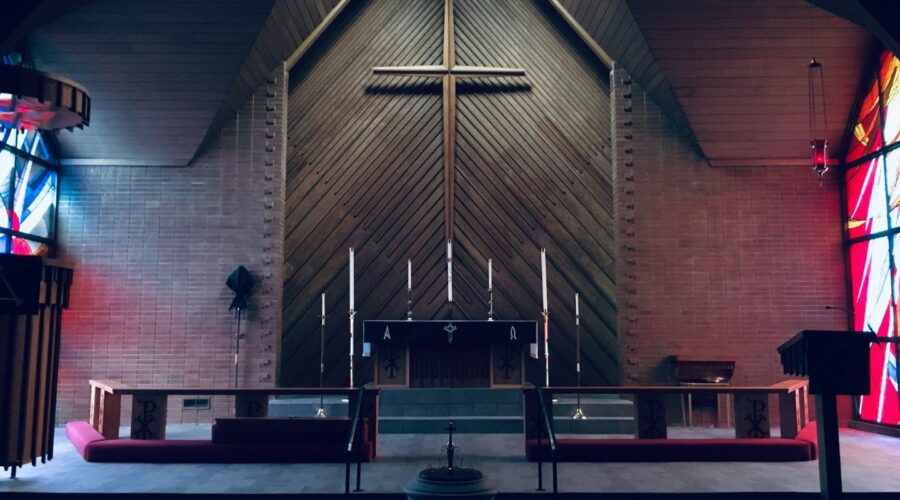
Explore the Mystical All Souls Church: A Sanctuary of History, Literature, and Architecture
An Architectural Masterpiece: Embracing Gothic Revival
All Souls Church, nestled in the heart of Manhattan, stands as a captivating embodiment of the Gothic Revival architectural style. This magnificent edifice, designed by the renowned architect James Renwick Jr., exudes an aura of timeless elegance. Its soaring spires, intricate stained-glass windows, and opulent interior transport visitors to a bygone era of ecclesiastical grandeur.
The church’s exterior is a symphony of Gothic elements, with pointed arches, ribbed vaults, and elaborate carvings adorning its every facade. The stunning rose window, intricately crafted with colorful glass, adds a vibrant splash of artistry to the stone facade. Its towering steeple, rising high above the surrounding cityscape, serves as a beacon of spiritual guidance and architectural prowess.
A Sacred Tapestry: The Artistic Interior
Stepping inside All Souls Church is like embarking on a journey through an art museum. The interior is a breathtaking showcase of Gothic Revival aesthetics, adorned with exquisite murals, sculptures, and stained-glass windows. The walls are adorned with intricate frescoes, depicting scenes from the life of Christ and other biblical narratives. The vaulted ceilings, supported by slender columns, create an atmosphere of awe and reverence.
The stained-glass windows, crafted by renowned artisans, portray biblical figures, saints, and allegorical scenes. The play of light through these vibrant glass panels illuminates the interior with ethereal hues, casting a mystical ambiance upon the sacred space.
Literary Legacy: A Haven for Writers
All Souls Church has a rich literary legacy, its pews and aisles having witnessed the presence and inspiration of some of the greatest writers of American literature. Henry James, Edith Wharton, and William Dean Howells were frequent attendees, seeking solace and creative inspiration within the church’s hallowed halls. The church’s literary connections have been immortalized in works such as James’ “The Ambassadors” and Wharton’s “The House of Mirth”.
The church’s close association with the literary world continues to this day. It hosts regular readings, lectures, and workshops, fostering a vibrant literary community and honoring its rich literary heritage.
Community Outreach: A Beacon of Service
Beyond its architectural and literary significance, All Souls Church is renowned for its unwavering commitment to community service. The church has a long history of supporting local charities and non-profit organizations, providing assistance to those in need and working towards social justice.
The church’s outreach programs include soup kitchens, food pantries, and after-school programs. All Souls Church serves as a beacon of hope and compassion within the community, offering a helping hand to those in need.
Visitor Information: Experiencing All Souls Church
Hours of Operation:
- Monday – Friday: 9:00 AM – 5:00 PM
- Saturday: 9:00 AM – 4:00 PM
- Sunday: 12:00 PM – 3:00 PM
Admission:
All Souls Church is open to the public free of charge. Guided tours are available for a nominal fee.
Location:
All Souls Church
80 East 66th Street
New York, NY 10065Contact Information:
Tel: (212) 288-4410
Email: [email protected]Additional Resources:
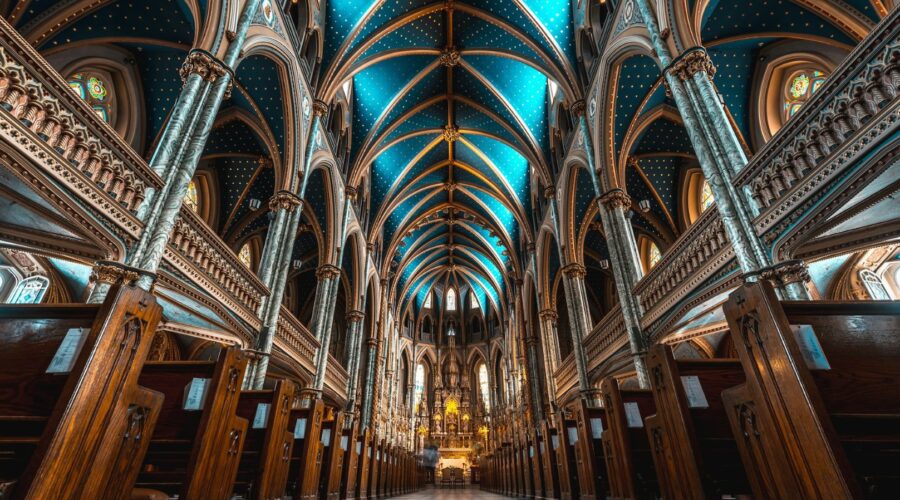
Discover the Rich History and Enchanting Architecture of St. James’s Church
Immerse yourself in the captivating history and architectural splendor of St. James’s Church, a beacon of ecclesiastical heritage and cultural significance. This comprehensive guide unravels the intriguing stories, hidden details, and awe-inspiring features that have made St. James’s Church an enduring landmark in the heart of London.
The Intriguing History of St. James’s Church
St. James’s Church traces its origins to the 12th century, with the first stone chapel likely built around 1140. However, the church’s most significant transformation occurred in the 17th century under the patronage of King Charles II.
The Wren’s Majestic Design
In 1661, Sir Christopher Wren, renowned for his architectural genius, was commissioned to redesign the church. Wren’s classical style resulted in an exquisite edifice, featuring a grand, columned portico, a soaring tower, and a spacious interior adorned with intricate carvings and stained-glass windows.
Royal Connections and Grand Weddings
St. James’s Church has witnessed a plethora of royal weddings, including Princess Anne’s marriage to Captain Mark Phillips in 1973. The church’s association with royalty continues to this day, with Queen Elizabeth II attending regular services.
Architectural Highlights of St. James’s Church
St. James’s Church boasts a harmonious blend of classical and Gothic architectural elements that create a visually captivating masterpiece.
The Towering Steeple
The church’s most striking feature is its towering spire, which reaches a height of 180 feet. Constructed from Portland stone, the steeple is adorned with intricate carvings and serves as a prominent landmark in the city skyline.
The Columned Portico
The grand portico at the church’s entrance is supported by six colossal Corinthian columns. These columns are adorned with intricate carvings and support a triangular pediment featuring a relief depicting Saint James the Great.
The Impressive Interior
The interior of St. James’s Church is a testament to Wren’s architectural brilliance. The nave is divided by rows of tall, fluted columns, creating a sense of grandeur and spaciousness.
Exploring the Notable Features of St. James’s Church
Beyond its architectural splendor, St. James’s Church is home to numerous notable features that enhance its historical and cultural significance.
The Historic Organ
The church’s renowned organ, built by renowned organ builder Bernard Smith in 1691, is one of the oldest surviving organs in London. The organ has undergone several restorations over the centuries and continues to be played for services and concerts.
The Poets’ Corner
St. James’s Church is renowned for its Poets’ Corner, a memorial to some of England’s most celebrated poets. Among those commemorated are John Dryden, William Blake, and Alfred, Lord Tennyson.
The Stained-Glass Windows
The church’s magnificent stained-glass windows depict a variety of biblical scenes and saints. The windows, created by renowned artists, such as Edward Burne-Jones and William Morris, add a vibrant and colorful element to the church’s interior.
Tips for Visiting St. James’s Church
To fully appreciate the beauty and significance of St. James’s Church, consider these practical tips:
- Check the church’s website for service times and special events.
- Book a guided tour in advance to delve deeper into the church’s history and architecture.
- Allow ample time to explore the church’s interior, including the Poets’ Corner and the stained-glass windows.
- Consider attending a musical performance in the church, such as an organ recital or a choral concert.
Additional Resources
- Official website of St. James’s Church
- St. James’s Church on Visit London
- St. James’s Church on Historic England
Conclusion
St. James’s Church stands as a testament to the enduring power of faith and the artistry of human ingenuity. Its rich history, magnificent architecture, and notable features have made it a beloved landmark in London, admired by countless visitors and locals alike. By exploring this ecclesiastical masterpiece, we not only appreciate its architectural beauty but also connect with the stories and traditions that have shaped it over centuries.
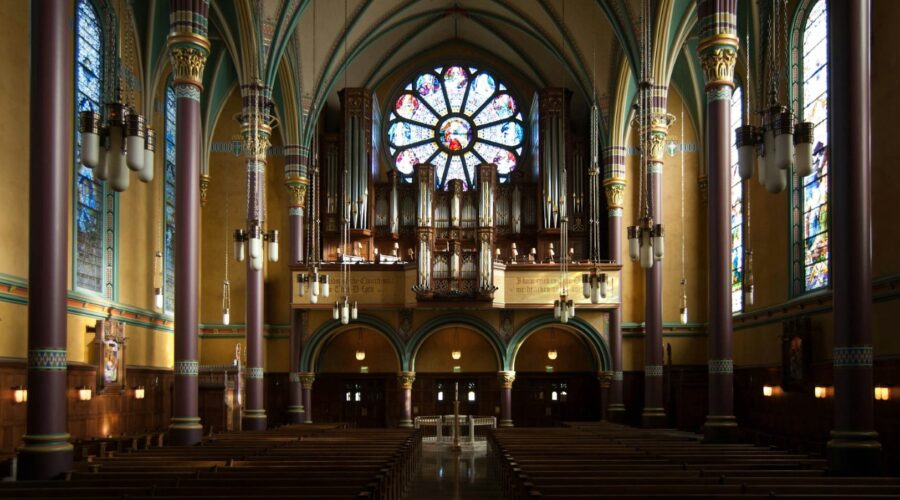
Discover the Power of the Our Lady of Perpetual Help Novena: A Guide to Miracles and Devotion
Introduction: Unveiling the Miraculous Image
The Our Lady of Perpetual Help, also known as Our Mother of Perpetual Help or the Madonna del Perpetuo Soccorso, is a renowned icon venerated by millions worldwide. This sacred image depicts the Blessed Virgin Mary holding the infant Jesus, while archangels Michael and Gabriel present them with instruments of Christ’s Passion. The image first appeared in Rome in the mid-15th century and has since become a symbol of hope, healing, and unwavering support.
Section 1: The Novena Devotion
Subsection 1.1: What is a Novena?
A novena is a devotional practice in the Christian faith that involves praying a specific set of prayers or meditations for nine consecutive days. It is often used to implore God’s intercession or the support of a particular saint.
Subsection 1.2: The Our Lady of Perpetual Help Novena Prayers
The traditional Our Lady of Perpetual Help Novena consists of daily prayers that include the Novena Prayer, Hail Mary, and The Memorare. These prayers can be found in numerous resources online or in prayer books.
Subsection 1.3: How to Pray the Novena
To pray the novena, follow these steps:
- Begin by saying the Novena Prayer.
- Recite three Hail Marys.
- End with The Memorare.
- Repeat this process for nine consecutive days.
Section 2: The History and Significance of the Icon
Subsection 2.1: Origins of the Image
The origins of the Our Lady of Perpetual Help icon are shrouded in mystery. According to legend, it was brought to Rome from Crete in 1496 or 1499. It was first housed in the Church of San Matteo in Via Merulana, where it became famous for its miraculous powers.
Subsection 2.2: The Augustinian Friars
In 1866, Pope Pius IX entrusted the care of the icon to the Augustinian Friars. They established the Church of Our Lady of Perpetual Help on Via Merulana, where the image remains enshrined to this day.
Subsection 2.3: The Symbolism of the Icon
The Our Lady of Perpetual Help icon is rich in symbolism:
- Mary’s Blue Mantle: Represents her purity and humility.
- Jesus’ Red Tunic: Symbolizes his Passion and sacrifice.
- Archangels Michael and Gabriel: Represent the heavenly protection that accompanies Mary and Jesus.
- Instruments of the Passion: Remind us of Christ’s suffering and redemption.
- “Mother of Perpetual Help”: Inscribed on the icon, reflects Mary’s unwavering support for those in need.
Section 3: Miracles and Devotional Practices
Subsection 3.1: Reported Miracles
Throughout history, countless miracles have been attributed to the intercession of Our Lady of Perpetual Help. These include healings, conversions, and other extraordinary graces.
Subsection 3.2: Popular Devotions
Besides the novena, popular devotions to Our Lady of Perpetual Help include:
- Tuesday Devotions: Tuesdays are dedicated to Our Lady of Perpetual Help in many churches.
- Rosary Novena: A nine-day novena prayed with the rosary.
- Scapular of Our Lady of Perpetual Help: A small cloth scapular bearing the image.
- Feast Day: June 27th is the feast day of Our Lady of Perpetual Help.
Section 4: Tips for Praying the Novena Effectively
- Set Aside Time: Dedicate a specific time each day to pray the novena.
- Create a Sacred Space: Find a quiet place where you can focus on your prayers.
- Pray from the Heart: Don’t just recite the words; let them come from your heart.
- Have Faith: Believe in the power of God and Mary’s intercession.
- Trust and Surrender: Place your needs and desires in the hands of God and Our Lady.
Section 5: Conclusion: Finding Hope and Healing
The Our Lady of Perpetual Help novena is a powerful tool for finding hope, healing, and unwavering support. By praying this novena, you can connect with the compassionate love of Mary and experience the miraculous power of God. Remember, you are never alone. Our Lady of Perpetual Help is always there to guide and protect you, offering her perpetual help on your journey.
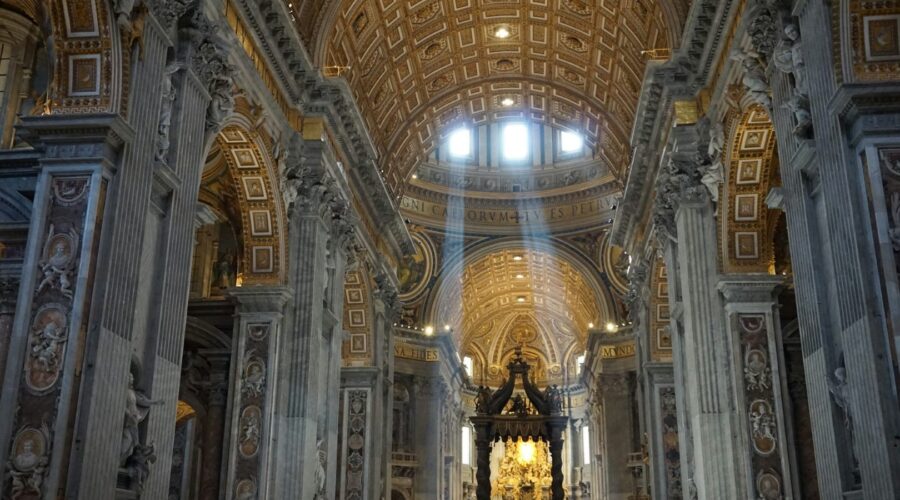
Carl Trueman: A Comprehensive Exploration of His Theological Contributions and Controversies
Introduction
Carl Trueman is a prominent British theologian, author, and academic who has made significant contributions to the field of Christian theology. Known for his conservative evangelical views and his incisive critiques of modern culture, Trueman has attracted both ardent supporters and vocal detractors. This comprehensive blog post delves into Trueman’s theological contributions, exploring his major themes, beliefs, and the controversies that have surrounded his work.
Major Themes in Trueman’s Theology
Biblical Authority
Trueman places a high emphasis on the authority of Scripture, believing in its inerrancy and sufficiency for faith and practice. He argues that the Bible is the primary source of Christian doctrine and that its teachings must be interpreted and applied in a literal and historical manner.
Reformed Theology
Trueman adheres to the Reformed tradition within Protestantism, which emphasizes the doctrines of grace, justification by faith alone, and the sovereignty of God. He believes in the total depravity of humankind and the necessity of God’s electing love in salvation.
Cultural Engagement
Trueman sees Christianity as a holistic faith that influences every aspect of life, including culture. He argues that the church has a responsibility to engage with culture in a winsome and transformative way, while simultaneously resisting its unbiblical values and practices.
Key Beliefs
Salvation
According to Trueman, salvation is a gift from God that is not earned but received through faith in Jesus Christ. He believes that Jesus’s atoning death on the cross has satisfied the wrath of God against sin, offering forgiveness and eternal life to all who repent and believe.
Sanctification
Trueman emphasizes the ongoing process of sanctification in the Christian life. He teaches that believers are gradually transformed into the image of Christ through the indwelling of the Holy Spirit. Sanctification includes both personal holiness and a commitment to social justice.
Eschatology
Trueman holds a dispensational view of eschatology, which divides history into distinct periods and interprets the end times prophetically. He believes that Christ’s second coming will be a visible, bodily event that will usher in a new heaven and a new earth.
Controversies Surrounding Trueman’s Work
Evangelical Perspectives
Trueman’s conservative views have often clashed with the more progressive wing of the evangelical movement. He has been criticized for his opposition to same-sex marriage, his rejection of women in pastoral leadership, and his perceived intolerance towards those with different theological perspectives.
Historical Scholarship
Some scholars have questioned the accuracy of Trueman’s historical interpretations. Critics point out that he often selects certain historical figures or events to support his arguments while ignoring or downplaying others.
Cultural Critique
Trueman’s cultural critiques have drawn both praise and criticism. While many appreciate his incisive insights into the challenges facing the church in the contemporary world, others accuse him of being overly pessimistic and judgmental.
Conclusion
Carl Trueman is a complex and controversial figure whose theological contributions have significantly impacted evangelical Christianity. His emphasis on biblical authority, Reformed theology, and cultural engagement has inspired and challenged many. However, his conservative views and his critical approach to modern culture have also generated controversy. Ultimately, Trueman’s legacy as a theologian will continue to be debated and discussed for years to come.
Additional Resources
Books by Carl Trueman
- The Republishing of Christendom: Media, Politics, and the Rise of Modern Protestantism
- The Creedal Imperative
- Luther on the Christian Life
Interviews and Lectures
- Carl Trueman on Biblical Authority and Cultural Engagement
- Carl Trueman on Cultural Engagement
- Carl Trueman on the Reformation and After
Articles and Reviews
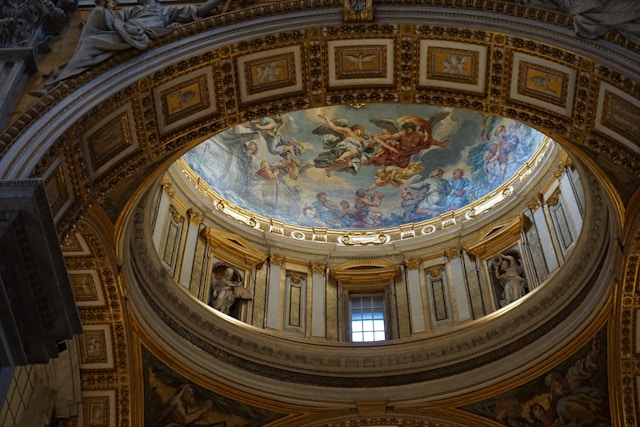
Unveiling the History and Legacy of the First Congregational Church
Origins and Establishment
The First Congregational Church, often referred to as the “mother church” of American Congregationalism, traces its roots to the founding of the Massachusetts Bay Colony in the 17th century. In 1629, a group of English Puritans led by John Winthrop established a church in Salem, which later became known as the First Church of Salem.
Pilgrim and Puritan Roots
The origins of the First Congregational Church can be traced to the Separatist movement within the Church of England during the reign of Queen Elizabeth I. Separatists, like the Pilgrims who founded Plymouth Colony, believed that the Church of England was too corrupt and sought to establish their own independent congregations based on biblical principles.
Theological Beliefs and Church Governance
Congregational Polity
The First Congregational Church adheres to the principle of congregational polity, which holds that each local congregation is autonomous and self-governing. This means that the church is led by a group of elected elders and deacons who are responsible for the spiritual and administrative affairs of the congregation.
Calvinist Theology
The First Congregational Church holds to the Calvinist tradition, which emphasizes the sovereignty of God, the depravity of human nature, and the need for salvation through faith in Jesus Christ. Calvinist theology also places a strong emphasis on personal sanctification and the importance of a holy life.
Pastoral Leadership and Notable Members
Prominent Pastors
The First Congregational Church has been served by a succession of influential pastors over the centuries, including:
- John Cotton (1633-1652): A leading Puritan divine and author of the influential catechism, “Milk for Babes.”
- Increase Mather (1664-1723): A prominent Puritan scholar, theologian, and president of Harvard College.
- John Hancock (1780-1793): A signer of the Declaration of Independence and the first governor of Massachusetts.
Notable Members
The First Congregational Church has also been home to many notable members, including:
- Benjamin Franklin: A founding father of the United States and a member of the church for many years.
- Paul Revere: A silversmith and a member of the Sons of Liberty, who alerted the militia to the arrival of the British in 1775.
- Abigail Adams: The wife of President John Adams and an active member of the church.
Historic and Architectural Significance
Meetinghouse and Burial Ground
The First Congregational Church has occupied several meetinghouses over the centuries, with the current building located on Washington Street in downtown Boston. The original meetinghouse was built in 1639, and the present structure dates back to 1809.
The church is notable for its beautiful Georgian architecture and its association with many important historical events. The Boston Massacre took place just steps away from the meetinghouse in 1770, and the church was used as a barracks by British troops during the Revolutionary War.
Grand Burying Ground
Adjacent to the meetinghouse is the Grand Burying Ground, the final resting place of many prominent Bostonians, including John Hancock, Samuel Adams, and Paul Revere. The graveyard is a historic landmark and a poignant reminder of the church’s long history and its connection to the city of Boston.
Modern Day and Future Vision
Today, the First Congregational Church continues to serve as an active and vibrant community of faith. The congregation is committed to its historic roots while also embracing contemporary challenges and opportunities.
Inclusive and Welcoming
The First Congregational Church welcomes people from all walks of life, regardless of race, gender, sexual orientation, or religious background. The church strives to create an inclusive and welcoming environment where all are valued and respected.
Social Justice Advocacy
The First Congregational Church has a long history of social justice advocacy, dating back to its early days as a supporter of the abolitionist movement. Today, the church remains active in addressing issues such as poverty, homelessness, and racial inequality.
Outreach and Ministries
The First Congregational Church offers a variety of outreach programs and ministries, including:
- Community meals: The church provides free meals to those in need on a regular basis.
- After-school programs: The church offers after-school tutoring and enrichment programs for children in the surrounding neighborhood.
- Music and arts programs: The church has a strong music and arts program, with a choir, a bell choir, and a variety of other performing groups.
Conclusion: A Legacy of Faith, Service, and Transformation
The First Congregational Church has a rich and storied history that spans nearly four centuries. From its humble beginnings as a small congregation of English Puritans to its current status as a vibrant and inclusive community of faith, the church has played a pivotal role in shaping the religious, social, and cultural landscape of Boston and beyond.
The church’s legacy is one of faith, service, and transformation. It is a place where people gather to worship, learn, and make a difference in the world. As the church looks to the future, it remains committed to its historic mission of serving as a beacon of hope and inspiration for all who seek it.
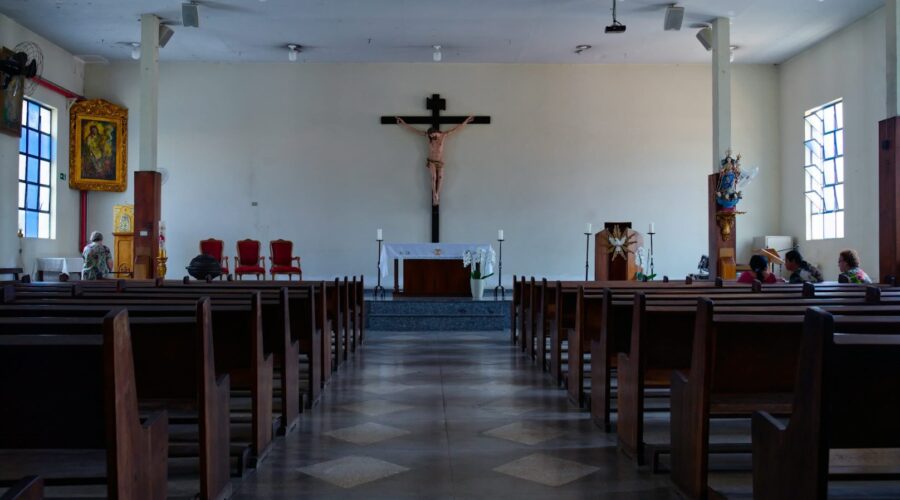
Discover the Grandeur and Historic Significance of St Paul’s: An Architectural and Spiritual Masterpiece
Introduction
St Paul’s Cathedral, an iconic landmark in London, England, stands as a testament to architectural ingenuity and religious significance. This grandeur cathedral has been a centerpiece of the city’s skyline for centuries, attracting visitors from around the world who marvel at its magnificence and historical importance.
History and Architecture
Early Beginnings
The origins of St Paul’s can be traced back to the 7th century when a wooden church was built on the site. Over the centuries, subsequent churches were constructed, each expanding and embellishing the original structure.
The Great Fire of London
In 1666, the Great Fire of London devastated much of the city, including the medieval St Paul’s. The current cathedral was designed by Sir Christopher Wren as part of the rebuilding efforts after the fire.
Wren’s Masterpiece
Wren’s Baroque masterpiece took over 30 years to complete and reflects his brilliance as an architect. The cathedral features a massive dome, supported by a complex system of arches and vaults. The exterior is adorned with intricate carvings, sculptures, and a colonnaded portico.
Key Features
The Dome
The centerpiece of St Paul’s is the majestic dome, the second largest in the world. It soars to a height of 365 feet and is supported by 32 giant columns. The interior of the dome is adorned with stunning mosaics depicting scenes from the life of Christ.
The Nave and Choir
The vast nave and choir form the central space of the cathedral. The nave is lined with massive pillars that support the vaulted ceiling. The choir features ornate carvings and a stunning gold-plated organ.
The Crypt
Beneath the cathedral lies the extensive crypt, where visitors can explore the remains of previous churches and see the tombs of notable figures, including Admiral Lord Nelson.
Spiritual Significance
St Paul’s has been an important center of religious life for centuries. It is the seat of the Bishop of London and serves as the mother church of the Diocese of London.
- Worship and Ceremonies: St Paul’s hosts regular services, including daily prayers, Eucharist, and special ceremonies such as confirmations and ordinations.
- Baptisms and Marriages: The cathedral is a popular venue for baptisms and marriages, continuing its tradition as a sacred space for significant life events.
- Pilgrimage and Tourism: St Paul’s attracts numerous pilgrims and tourists from around the world who come to marvel at its architectural beauty and spiritual significance.
Visiting St Paul’s
Visiting St Paul’s is an unforgettable experience. Here are some tips for planning your visit:
- Book Tickets in Advance: To avoid queues, it is recommended to book tickets online in advance.
- Choose the Right Time: Visit during off-peak hours or early mornings to avoid crowds.
- Explore the Crypt: Don’t miss the opportunity to visit the fascinating crypt, which houses tombs and archaeological remains.
- Attend a Service: If possible, attend one of the regular services to experience the spiritual ambiance of the cathedral.
Conclusion
St Paul’s Cathedral is a captivating symbol of London’s rich history and architectural splendor. Its awe-inspiring dome, magnificent interior, and spiritual significance make it a must-visit destination for anyone seeking to uncover the cultural and religious heritage of the city. Whether you are a devout believer, an architecture enthusiast, or simply curious about the wonders of the world, St Paul’s offers an unforgettable experience that will leave a lasting impression.
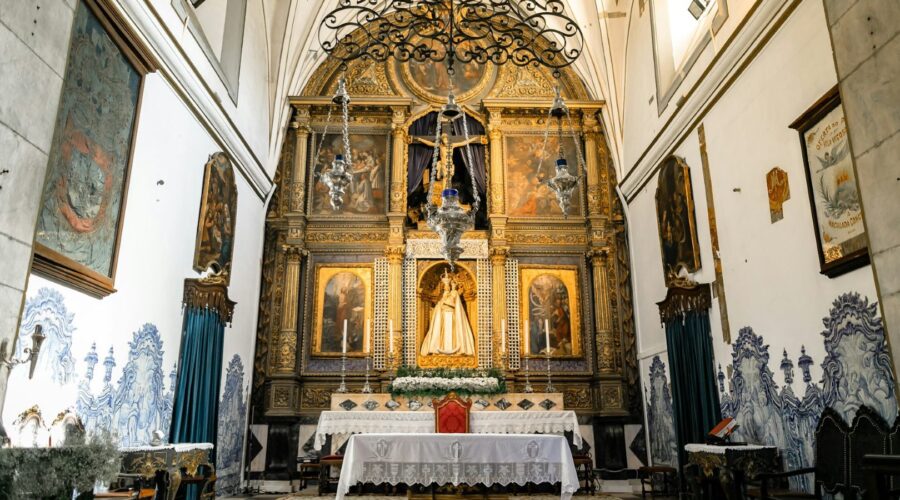
Matt Chandler: A Life Devoted to Faith and Leadership
Introduction
Matt Chandler is a renowned pastor, speaker, and author who has dedicated his life to the service of God and the church. He is the founder and lead pastor of The Village Church in Flower Mound, Texas, one of the largest and most influential churches in the United States.
Throughout his ministry, Chandler has become known for his compelling preaching, biblical insights, and unwavering commitment to spiritual growth. His teachings have reached millions of people around the world, inspiring countless individuals to pursue a deeper relationship with Christ and to serve their communities.
Early Life and Education
Matthew Chandler was born on September 21, 1966, in Arlington, Virginia. He grew up in a devout Christian household and attended Multnomah Bible College in Portland, Oregon, where he earned a Bachelor of Science degree in Biblical Studies.
Pastoral Ministry
The Village Church
After graduating from Bible college, Chandler worked as an associate pastor at The Village Church in Highland Village, Texas. In 1999, he was unanimously chosen to succeed the founding pastor, Bruce Wilkinson. Under Chandler’s leadership, The Village Church has grown exponentially, becoming a thriving community of over 10,000 members.
Chandler is known for his engaging preaching style and his ability to connect with people from all walks of life. His sermons are both theologically rich and practically relevant, addressing contemporary issues and offering biblical guidance for daily living.
Leadership and Influence
Beyond his local church, Chandler has become a sought-after speaker and leader within the evangelical community.
- He has authored several bestselling books, including “The Explicit Gospel,” “To Live Is Christ,” and “The Mingling of Souls.”
- He serves as the president of The Gospel Coalition, a network of churches and ministries that promote biblical faithfulness and gospel-centered living.
- He is a regular contributor to Christianity Today and The Huffington Post, and his teachings have been featured in TIME, Newsweek, and other national media outlets.
Biblical Perspectives
Chandler’s teachings are centered on the belief that the Bible is the authoritative Word of God and that it provides the foundation for a meaningful and fulfilling life.
Gospel and Grace
Chandler places a strong emphasis on the gospel of Jesus Christ, which he believes is the ultimate source of hope and salvation. He teaches that all people are sinners and are in need of God’s grace, which is freely offered through faith in Jesus.
Discipleship and Transformation
Chandler believes that Christian discipleship is a lifelong journey of growth and transformation. He encourages believers to pursue a deeper relationship with Christ, to study the Bible diligently, and to apply its teachings to their daily lives.
Church and Community
Chandler emphasizes the importance of the local church as a place where believers can grow together in faith and serve their communities. He encourages church members to be involved in ministries, small groups, and outreach programs to extend the love of Christ to those around them.
Notable Accomplishments
- Launched The Village Church, which has grown to become one of the largest churches in the United States.
- Authored several bestselling books that have sold millions of copies worldwide.
- Served as president of The Gospel Coalition, a leading evangelical network.
- Recognized by TIME as one of the “100 Most Influential People” in the world in 2014.
- Received the “Impact Award” from the National Religious Broadcasters in 2019.
Conclusion
Matt Chandler is a gifted pastor, speaker, and author who has made a significant impact on the Christian community and beyond. His unwavering commitment to biblical faithfulness, gospel-centered living, and spiritual growth has inspired countless individuals to pursue a deeper relationship with Christ and to serve others with compassion and purpose.
Chandler’s teachings and example continue to challenge and encourage believers around the world, reminding them of the transforming power of God’s grace and the importance of living out the gospel in all aspects of life.

Exploring the Holy Trinity Church: A Journey Through History, Architecture, and Significance
Introduction
The Holy Trinity Church holds a significant place in the realm of Christianity, not only as a sacred place of worship but also as a testament to centuries-old artistry and architectural prowess. This comprehensive blog post will delve into the rich history, intricate architecture, and profound meaning of the Holy Trinity Church, offering insights into its enduring legacy.
Historical Significance
Foundation and Development
- The Holy Trinity Church traces its origins to the 4th century, established during the reign of Constantine the Great.
- It underwent several renovations and expansions over the centuries, reflecting the changing political and religious landscape.
- Following the Norman Conquest in 1066, the church was rebuilt in the Norman style, which remains visible in parts of today’s structure.
Key Historical Events
- The church witnessed significant events throughout its history, including coronations, royal weddings, and religious ceremonies.
- In the 13th century, King Henry III rebuilt the chancel and added the Lady Chapel, creating an exquisite space for worship.
- The church played a central role in the English Reformation, with Henry VIII breaking ties with the Roman Catholic Church.
Architectural Splendor
Exterior Design
- The Holy Trinity Church is renowned for its striking exterior, characterized by its grand facade and intricate stonework.
- The western front features elaborate carvings, including statues of saints and biblical scenes.
- The nave and aisles are adorned with flying buttresses, providing both structural support and visual interest.
Interior Grandeur
- The church’s interior is equally impressive, showcasing a blend of architectural styles and ornate details.
- The nave, the main body of the church, is vast and airy, with high vaulted ceilings.
- The chancel, the area around the altar, is separated by a magnificent rood screen, featuring intricate carvings and elaborate tracery.
- The Lady Chapel, located at the east end, is a serene space with stained glass windows depicting biblical narratives.
Sacred Meaning and Symbolism
The Holy Trinity
The Holy Trinity Church derives its name from the Christian doctrine of the Trinity.
- It is believed that God exists in three persons: the Father, the Son (Jesus Christ), and the Holy Spirit.
- The church serves as a physical representation of this divine unity, with the nave representing the Father, the chancel the Son, and the Lady Chapel the Holy Spirit.
Other Symbolic Elements
- Baptismal Font: The font, where baptisms take place, symbolizes the purification of sins.
- Stained Glass Windows: The colorful windows depict biblical stories and serve as a teaching tool for worshippers.
- Altar: The altar, the central focus of the church, represents the sacrifice of Christ and the communion between God and his people.
Contribution to Art and Culture
The Holy Trinity Church has played a pivotal role in shaping British art and culture.
- Music: The church has been home to renowned choirs and organists, contributing to the rich tradition of sacred music.
- Painting: Some of the interior walls feature medieval paintings, offering glimpses into the artistic styles of the time.
- Literature: The church has served as a setting for literary works, including Chaucer’s “Canterbury Tales.”
Visiting the Holy Trinity Church
Location and Access
- Address: Holy Trinity Church, Stratford-upon-Avon, England
- Access: The church is open to the public for worship, guided tours, and private visits.
- Guided Tours: Visitors can book guided tours to explore the church’s history, architecture, and sacred significance.
Tips for Visitors
- Dress Code: Respectful attire is recommended when visiting the church.
- Photography: Photography is allowed in most areas, but visitors are asked to be mindful of those engaged in worship.
- Accessibility: The church is wheelchair accessible, and assistive listening devices are available.
- Respectful Conduct: Visitors are reminded to maintain a respectful demeanor while in the church.
Conclusion
The Holy Trinity Church stands as a testament to the enduring power of faith, the ingenuity of human artistry, and the profound impact of spiritual beliefs on society. Its historical significance, architectural splendor, and sacred meaning have captivated generations of worshippers and visitors alike.
Whether embarking on a pilgrimage or simply seeking cultural enrichment, the Holy Trinity Church offers a glimpse into the rich tapestry of human history, artistry, and faith.
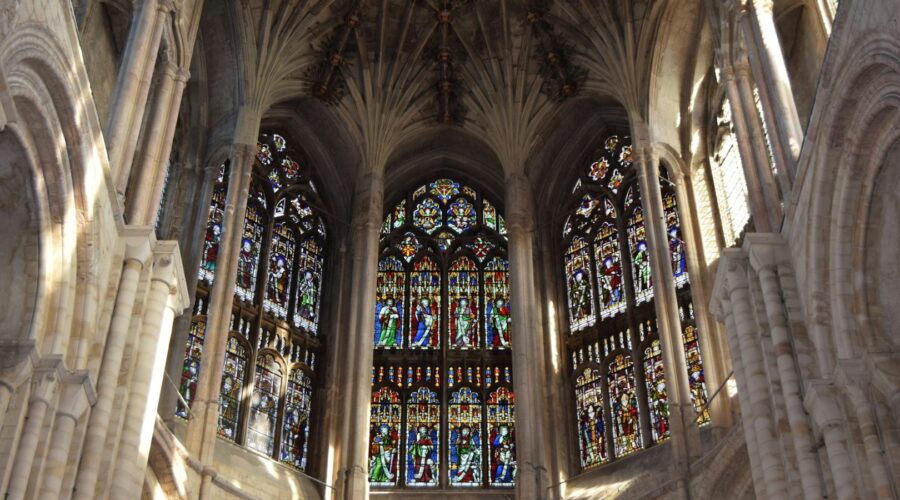
Discover the Miraculous Intercessions of Our Lady of Perpetual Help
Who is Our Lady of Perpetual Help?
Our Lady of Perpetual Help is a revered Marian icon of the Eastern Orthodox and Catholic Churches, depicting the Blessed Virgin Mary holding the Child Jesus. Originally an Eastern Christian icon known as Our Lady of the Passion, it was brought to Rome in the 15th century and became known as Our Lady of Perpetual Help. The icon is renowned for its alleged miraculous powers and has been a source of devotion for centuries.
History and Origin
The origins of the icon are obscure, but it is believed to have been created in the 14th century on the island of Crete, then a center of Eastern Christian art. In 1499, the icon was acquired by the Augustinian Fathers in Rome and enshrined in their church of Sant’Alfonso all’Esquilino. It was during this time that the icon’s associations with miraculous interventions grew, earning it the title “Our Lady of Perpetual Help.”
Miracles and Intercessions
Throughout history, numerous miracles have been attributed to the intercession of Our Lady of Perpetual Help. These include healings from illnesses, protection from danger, and the conversion of sinners. Some of the most well-known miracles include:
- The healing of a paralyzed woman in 1866.
- The protection of a ship from a storm in 1884.
- The conversion of a notorious criminal in 1904.
Devotion and Veneration
Our Lady of Perpetual Help is a beloved figure in both the Catholic and Orthodox Churches. She is often invoked in times of need, sorrow, and desperation. Numerous churches and shrines are dedicated to her, and countless pilgrims visit these sites each year to pray before her icon.
The devotion to Our Lady of Perpetual Help is spread through various means, including:
- Prayer and Novenas
- Consecration and Enrolments
- Miraculous Medals
- Feast Day Celebrations
Iconography and Symbolism
The icon depicts Mary as a young woman, her head covered with a blue veil and her eyes gazing out at the viewer. She wears a red robe adorned with gold stars, representing her purity and royalty. The Child Jesus is held in her left arm, his right hand raised in blessing and his left holding a book, symbolizing the Word of God.
Table 1: Iconography of Our Lady of Perpetual Help
| Element | Symbolism |
|—|—|
| Blue Veil | Purity and modesty |
| Red Robe | Royalty and sacrifice |
| Gold Stars | Mary’s role as the Mother of God |
| Child Jesus’ Raised Hand | Blessing and protection |
| Child Jesus’ Book | The Word of God |Prayer and Novenas
There are various prayers dedicated to Our Lady of Perpetual Help, including the Miraculous Medal Prayer and the Novena to Our Lady of Perpetual Help. The Novena is a nine-day prayer ritual often used to implore her intercession in specific needs.
Shrines and Pilgrimage Sites
Several shrines and pilgrimage sites are dedicated to Our Lady of Perpetual Help around the world, including:
- Sant’Alfonso all’Esquilino, Rome, Italy (Original icon location)
- Redemptoristine Monastery, Boston, USA
- Our Lady of Perpetual Help Basilica, Brooklyn, USA
- Saint Alphonsus Church, Bangalore, India
Conclusion
Our Lady of Perpetual Help remains a powerful symbol of faith, hope, and divine intervention. Her iconography, miracles, and devotion have touched countless lives throughout history. Whether seeking protection, healing, or spiritual guidance, the Blessed Virgin Mary continues to be a source of comfort and inspiration to those who turn to her for help.

Unveiling Westside Baptist Church: A Comprehensive Guide
Introduction
Nestled in the heart of Topeka, Kansas, Westside Baptist Church (WBC) has garnered both notoriety and controversy for its extreme fundamentalist beliefs. This blog post aims to shed light on this enigmatic religious organization, exploring its history, doctrines, practices, controversies, and outreach efforts.
History and Leadership
Early Years
WBC was founded in 1966 by Pastor Fred Phelps, Sr. (1929-2014). A staunch supporter of segregation and white supremacy, Phelps’s sermons were often laden with inflammatory rhetoric against homosexuality, abortion, and other perceived societal ills.
Controversial Leadership
Throughout his pastorate, Phelps’s leadership was marred by hate speech and legal battles. His most notorious beliefs included condemning the September 11th attacks as divine punishment for homosexuality and picketing the funerals of soldiers and AIDS victims with signs such as “God Hates Fags.”
Doctrines and Practices
Biblical Interpretation
WBC adheres to a strict literal interpretation of the Bible, believing it to be the infallible word of God. They reject modern-day translations and interpretations, holding to a “King James Only” stance.
Church Discipline
WBC maintains rigid church discipline, with members subject to excommunication for violating its doctrines or engaging in unacceptable behaviors, such as watching movies or listening to popular music.
Mission and Outreach
WBC’s mission is to spread its fundamentalist beliefs through preaching, picketing, and distributing literature. They have staged protests at abortion clinics, gay pride events, and military funerals to convey their message of condemnation.
Controversies and Legal Battles
Hate Speech
WBC’s extreme views have drawn widespread condemnation and legal challenges. In 1991, the Supreme Court ruled in favor of WBC’s right to protest at military funerals, although a buffer zone was established to prevent disruptions.
Defamation Lawsuits
WBC has also been involved in numerous defamation lawsuits filed by individuals who allege they were falsely accused of homosexuality or other offenses. Some of these lawsuits have been successful, leading to financial penalties against WBC.
Outreach and Social Media
Street Preaching and Picketing
WBC is known for its aggressive street preaching and picketing, often targeting individuals and groups they deem sinful. They have attracted both protests and support from counter-demonstrators.
Social Media Presence
WBC has an active social media presence, particularly on Twitter. They use these platforms to disseminate their beliefs and engage with followers, although their posts have often been met with criticism and condemnation.
Recent Developments
Decline in Membership
In recent years, WBC’s membership has reportedly dwindled, particularly after the death of Fred Phelps, Sr. Some members have left the church due to doctrinal disagreements or disapproval of its practices.
Continued Controversies
Despite its declining membership, WBC continues to generate controversy through its protests and social media presence. Their extreme beliefs and confrontational tactics have maintained their reputation as one of the most infamous fundamentalist groups in the United States.
Conclusion
Westside Baptist Church is a complex and polarizing religious organization known for its unwavering fundamentalism and controversial practices. Its history, doctrines, and controversies have shaped its unique identity and garnered both criticism and support from various quarters. As the church continues to navigate the changing social and religious landscape, its future remains uncertain, but its legacy as a symbol of religious extremism is likely to endure.